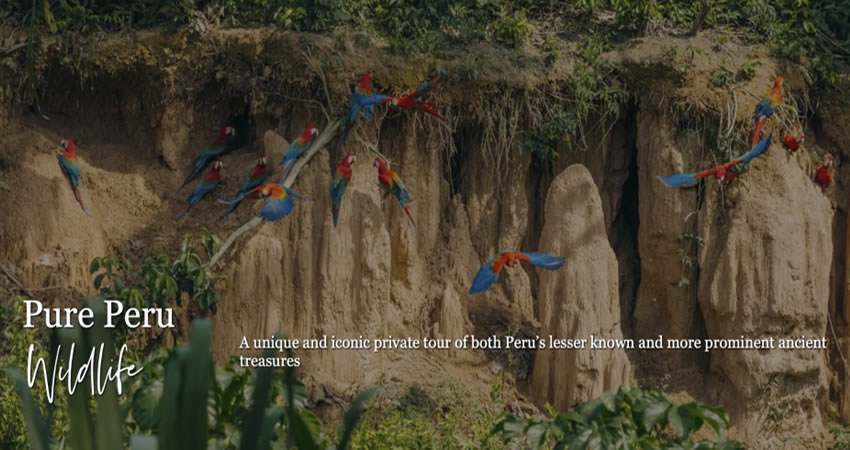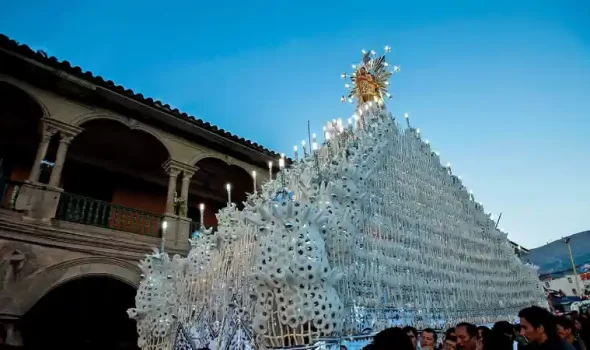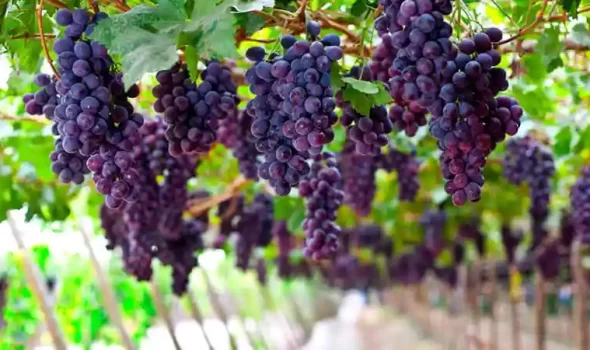1.- INTRODUCTION TO TAMBOPATA
To begin with the journey to learn more about the Birds in Tambopata, Peru it is important that you first know where it is located. The Tambopata Reserve is located in the extreme southeast of Peru in the Madre de Dios region, it is considered one of the most biodiverse places in the world. When you visit it in search of Birds in Tambopata, Peru you will notice that there is more than just forests here, it is also a paradise where there are extensive rivers, swamps and marshes forming ecosystems of life for plants and animals. Its name derives from a Quechua word meaning “refuge” and is linked to the river that runs through the middle, the Tambopata River.
Birding along Tambopata in Peru is very popular here because more than 600 species have been recorded throughout the territory, in addition to more than 1000 species of butterflies, 170 species of mammals and incredibly more than 10 thousand types of plants. This is only possible due to its strategic position in the Amazon basin, which allows the habitats and ecosystems formed to merge in a perfect way, allowing it to go from a flooded forest to a dry land forest at any time, for many wild species such as the jaguar, giant river otter, giant armadillo and spider monkey, it is like a sanctuary for their wildlife.
The existing percentage of Birds in Tambopata, Peru is considered one of the highest in the world, of course this diversity also plays an important role in the ecological balance because during the Birding along Tambopata in Peru has come to identify a large number of species that are in danger of extinction so that the entire Tambopata National Reserve has become an icon and example of effort to preserve species for protection and further study, for the Birding along Tambopata in Peru that are endemic and migratory becomes a sanctuary.
2.- NATURE’S MYSTERIES
“Something interesting that occurs in the Amazon rainforest is the idea that macaws, parrots and parakeets visit clay licks in order to consume this mineral with the intention of neutralizing the toxins they consume in their daily diets.”
3.- TAMBOPATA’S UNIQUE ECOSYSTEM
We are really not lying when we say that the Tambopata Reserve is a complete mosaic of tropical ecosystems and habitats in which plant and animal life develops in an impressive way, among the main habitats are:
3.1.- Lowland rainforest
It is one of the most emblematic habitats within the Tambopata National Reserve, has an extensive dense jungle and at the same time humid being home to multiple species such as plants and animals, can reach up to 30 meters high also having giant trees like the ceiba and is home to species such as the jaguar, tapir and howler monkey.
3.2.- Fluvial forest
They are popularly known as gallery forests and extend along the rivers and streams that are located in the dense jungle, this type of habitat are extremely important because they are the source of constant water for many species, here you can see mainly mammals and birds constantly, of course also other species such as caimans and capybaras.
3.3.- Cochas
These are formed by the small remains of water that are isolated becoming small sanctuaries where life spreads everywhere, for species such as the giant otter and the manatee become the perfect natural habitat. For some of the Birds in Tambopata, Peru these places represent a specific food spot mainly for herons, anhingas and hoatzins.
4.- MAIN BIRDS IN TAMBOPATA, PERU
There are hundreds of Birds in Tambopata, Peru due to the rich biodiversity that exists, so no matter which of the activities or travel packages you choose, we are sure that somehow you will come across at least a few Birds in Tambopata, Peru. However if you want to make it more specific with activities such as Birding along Tambopata in Peru the number will increase in an incredible way, some of the main Birds in Tambopata, Peru that you will see are:
4.1.- The Orinoco Goose
This is one of the few Birds in Tambopata, Peru that are aquatic species, this colorful bird although it is quite shy is also easy to identify mainly on the banks of the Tambopata River, preferably develops in open spaces with little vegetation, physically it is also identifiable by the long legs that presents pink on the other hand its plumage is easily identifiable by the distinctive colors used as a form of courtship and in situations of danger it uses it to camouflage itself in rocky areas.
4.2.- The black caracara
One of the Birds in Tambopata, Peru of raptor species, it is commonly seen patrolling and flying over the banks of the rivers in search of its food, which are small animals and careless fish that swim to the surface. It is similar in size to a crow and is completely black with the difference that it has bright yellow legs and face. We consider the black caracara as one of the Birds in Tambopata, Peru that are endemic, usually living below 1400 meters above sea level.
4.3.- The bat hawk
Unlike its siblings this type of hawk is quite small simulating the size of a bat, it usually hangs around the edges of rivers to hunt and feed, it is also very territorial and if other birds enter the territory it can easily hunt them. For this same reason it is one of the Birds in Tambopata, Peru that is more difficult to appreciate, however there is an infallible method and it is with the ear that regularly makes a distinctive sound that identifies it.
4.4.- The scarlet macaw
Something very distinctive among all the Birds in Tambopata, Peru is the sound that characterizes them, this same thing happens with the macaws. At dawn it is easy to hear how a flock of birds begins to sing and the scarlet macaws are the loudest, among all the Birds in Tambopata, Peru without a doubt this species is the easiest to appreciate, they are quite friendly with tourists so it will not be difficult to get a good photo. They can also be seen in flocks eating from the clay links, enjoying this spectacle is a good way to start the day.
4.5.- The Amazonian Kingfisher
Definitely on the list of the most incredible Birds in Tambopata, Peru is this species. During your trip you can appreciate at least 1 of its 3 varieties, this species always prefers to live very close to rivers and streams with little vegetation, as you approach a river you will begin to hear how their song reaches you, in both males and females of the species you can appreciate the presence of bright green upper parts and a thick and long tail.
| “If you reject food, ignore customs, fear religion and avoid people, it is better to stay at home.” |
5.- INFORMATION FOR THE TRAVELER
The climate you can expect during your visit to Tambopata is undoubtedly warm and humid at the same time during most of the year, its temperatures can vary between 24°C and 32°C. Unlike other destinations in Peru, seeing the jungle at its maximum natural splendor is possible during the rainy season that occurs between November and April, with the presence of the rains the entire landscape is transformed, increasing water levels generating that habitats are easily flooded and many animals hide and return in the dry season which is from May to October when activities such as Birding along Tambopata in Peru are more feasible.
By learning more about the Birds in Tambopata, Peru there are no more excuses to keep postponing your trip. Auri Peru will become your best choice of travel companion to travel the mysterious trails of the Amazon jungle, contact us to take the first step in your next adventure.
“Those who live see a lot. Who travels sees more.”






























